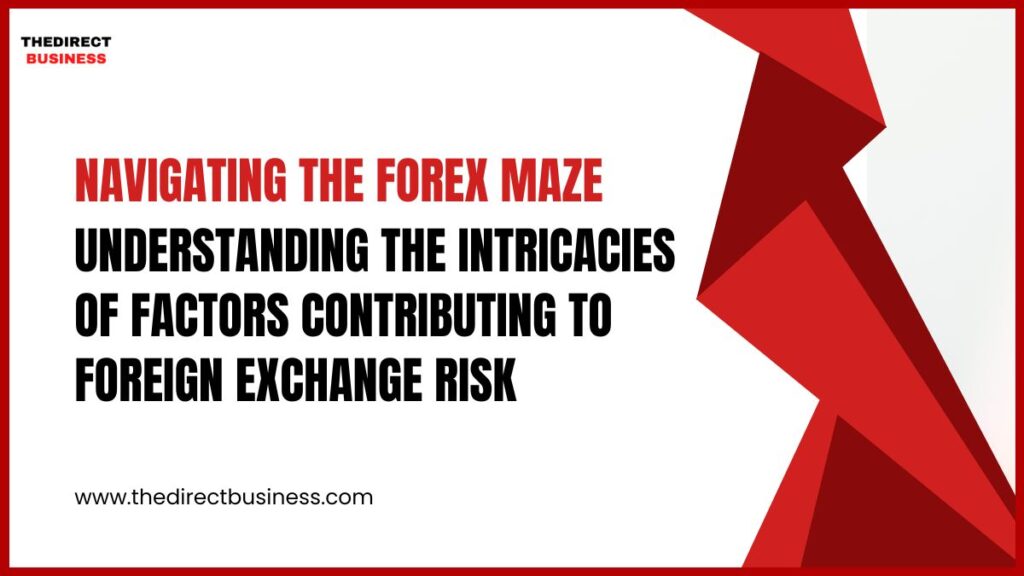
Foreign exchange risk, frequently alluded to as currency risk or forex risk, is a basic worry for businesses and investors participating in global exchanges. It emerges from the vacillation in exchange rates between various currencies, which can affect the benefit and monetary strength of associations. Understanding the factors adding to foreign exchange risk is fundamental for successfully overseeing it and pursuing informed choices in the worldwide marketplace. In this thorough blog entry, we will dive into the multifaceted subtleties of these factors and what they mean for businesses and investors.
- Economic Factors: Economic circumstances play an essential part in impacting exchange rates. Factors, for example, interest rates, inflation rates, and general economic execution can fundamentally influence a country’s currency esteem. High inflation or temperamental economic circumstances might prompt a devaluation of the nearby currency, causing foreign exchange risk.
- Political Security and Government Approaches: Political flimsiness and government strategies, including exchange guidelines and monetary arrangements, can make vulnerability in the foreign exchange market. Abrupt changes in administration or strategy choices can prompt currency unpredictability and expanded risk for worldwide businesses.
- Market Sentiment and Speculation: The forex market is profoundly delicate to market sentiment and speculative exercises. Brokers and investors frequently go with choices in light of assumptions and feelings, prompting sudden currency changes. These fast developments can open businesses to surprising exchange rate changes and so, one should use zero forex markup card.
- Exchange Equilibrium and Current Record: A nation’s exchange balance, which is the distinction between products and imports, can significantly affect its currency esteem. An import/export imbalance, where imports surpass trades, can come down on the nearby currency, expanding exchange rate risk.
- Worldwide Occasions and International Factors: International occasions, for example, clashes, exchange debates, and conciliatory pressures can cause abrupt and huge currency vacillations. Businesses with openness to districts impacted by international vulnerabilities face higher foreign exchange risk.
- Market Liquidity: The liquidity of the forex market likewise impacts exchange rate developments. In illiquid markets, enormous exchanges can prompt more significant cost swings, representing extra risks to businesses and investors.
- Speculative Assaults: Speculative assaults on a currency happen when merchants deliberately drive down the worth of a currency. Such go-after can be set off by apparent weaknesses in a country’s monetary framework or government strategies, bringing about significant foreign exchange risk.
- Interest Rate Differentials: Contrasts in interest rates between nations can draw in foreign ventures and affect currency values. Higher interest rates in a single nation might prompt enthusiasm for its currency, while lower rates can prompt devaluation.
Conclusion:
Foreign exchange risk is a multi-layered challenge that requires cautious thought and proactive administration by businesses and investors participating in worldwide exercises. Understanding the different factors adding to foreign exchange risk is pivotal for going with informed choices and carrying out viable risk alleviation strategies. Economic circumstances, political solidness, market sentiment, and a large group of different components cooperate to make the unique scene of forex risk. By remaining informed, enhancing currency openness, and utilizing supporting methods, associations and people can explore the intricacies of the foreign exchange market all the more effectively and safeguard their monetary interests in an undeniably globalized world.